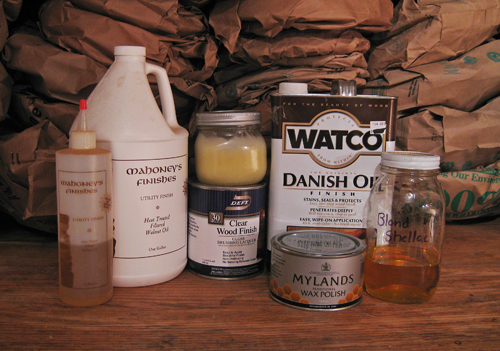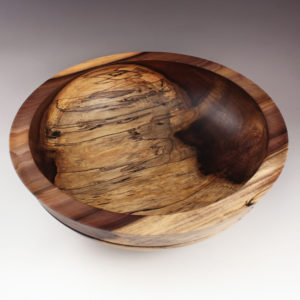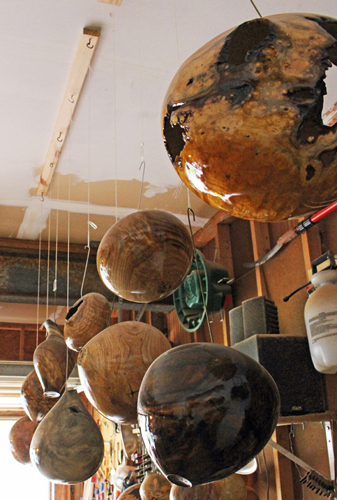Types of Wood Finishes Used for Woodturning

Wood Finishes I Use for Turning
I use three different types of wood finishes for my turned work. The function of the piece determines which finish I use. I make pieces used for display and utility, thus the finish has to meet the needs of those purposes. Recently I have begun experimenting with paint to develop other decorative effects. Although, as a general rule, I do not use coloration (other than a limited amount of ebonizing) on my turned work.
Utility or Functional Turnings

I consider utility pieces to be any turnings exposed to repetitive usage. They require a durable food safe wood finish that can be reapplied easily. A salad bowl finish is a good example of wood finish for these items. Traditionally these types of wood finishes have been wiping oils. Specifically, mineral oil for woodwork, raw oils (i.e. Tung, linseed, olive, walnut, grapeseed, etc.), Tung oil finish, Danish oil, and Boiled Linseed Oil, etc.
I prefer Mike Mahoney’s Walnut oil finish and his oil wax finish. This walnut oil is a natural penetrating oil that soaks into the grain and hardens as it dries. It does not evaporate like other food safe-finishes (i.e. mineral oil). Therefor, it requires less reapplication over time. The oil wax finish is a blend of walnut oil, beeswax, and carnauba wax. Its use provides additional protection and luster to the piece. The combination of these two produces produces a satin sheen. A satin sheen is more desirable as it diminishes the effects of wear and age.
What is Food Safe?
There are two schools of thought regarding food safe wood finish. The first is that any finish once cured is food safe. The other is that no finish that contains driers, solvents, petrochemicals, etc. is food safe. Consequently, the later excludes nearly all wood finishes other than raw oils.
The draw back with raw oils is that they cure extremely slowly. Additionally, they develop only minimal surface build. The only way to improve cure rates and surface build is to heat treat the oil or to add chemical driers. Chemical driers are most often heavy metal salts, mainly of chromium or manganese. Several popular types of commercial wiping finishes have both driers and solvents, thus creating the dilemma.
I personally do not know the accurate answer as to what is a food safe wood finish. Referring to the debate of finish safety on a cured finish. Therefor, I opt avoid the argument altogether and use Mahoney’s Walnut Oil. This way the finish is completely organic and has undergone a heating process to improve its curing qualities. It is a high acid oil which helps the cure rates and surface build. There are a few other food safe wood finishes that are options but I consider Walnut oil to be the best performing finish.
Sculptural Turnings

Lacquer Finish on Hollow Forms
